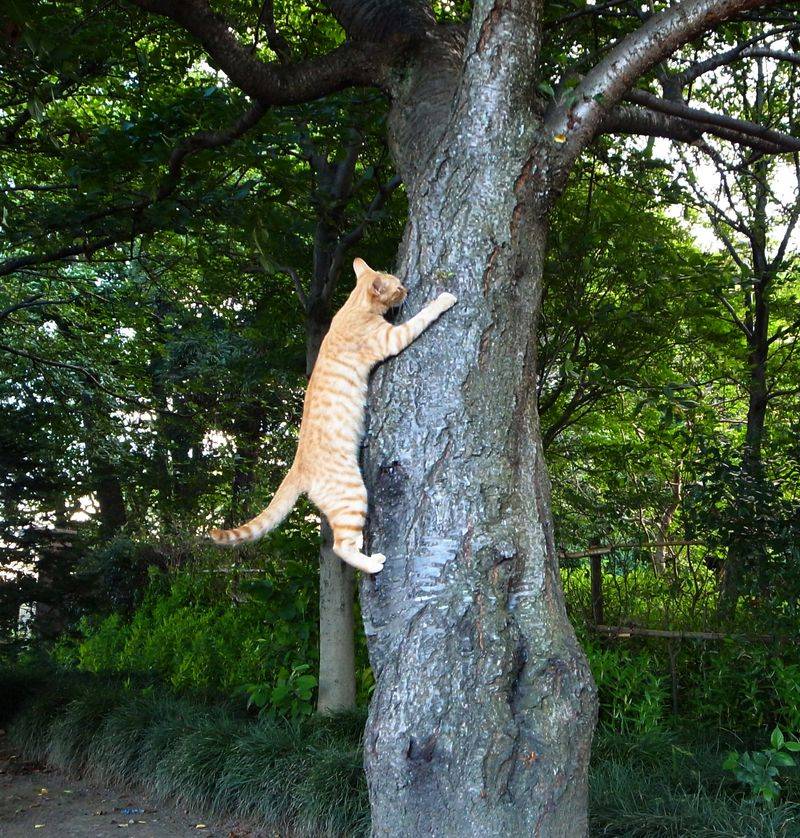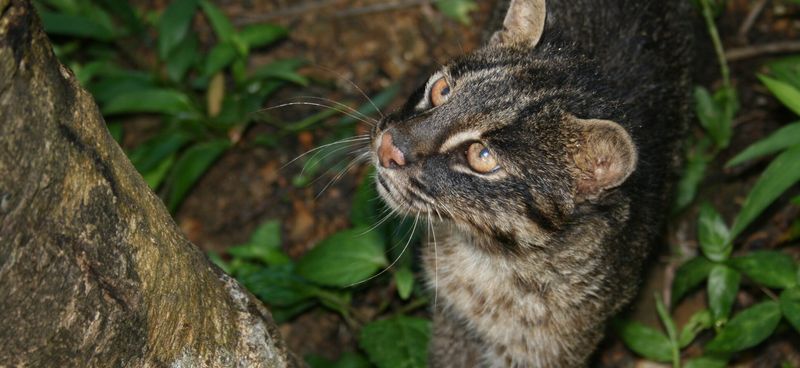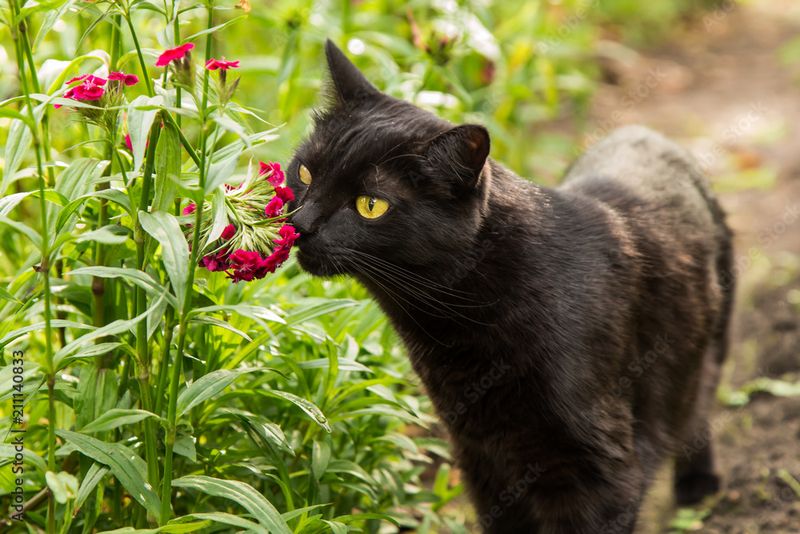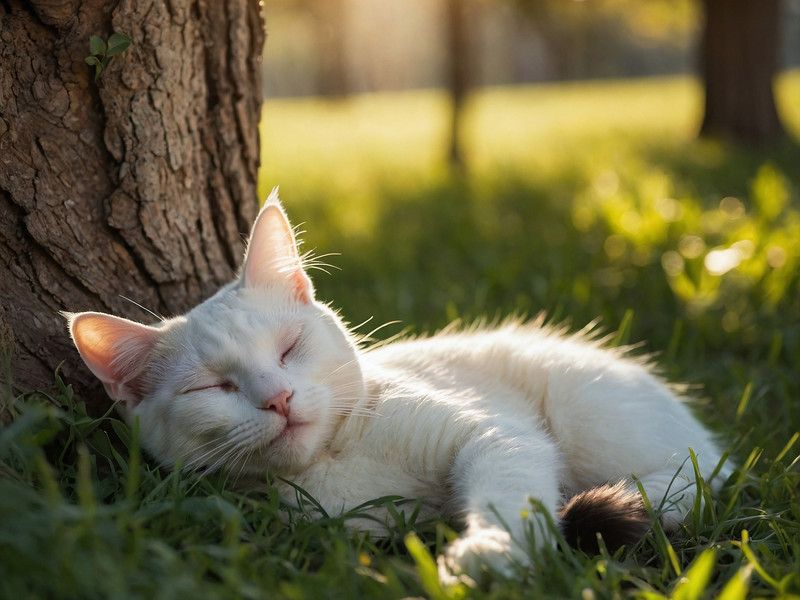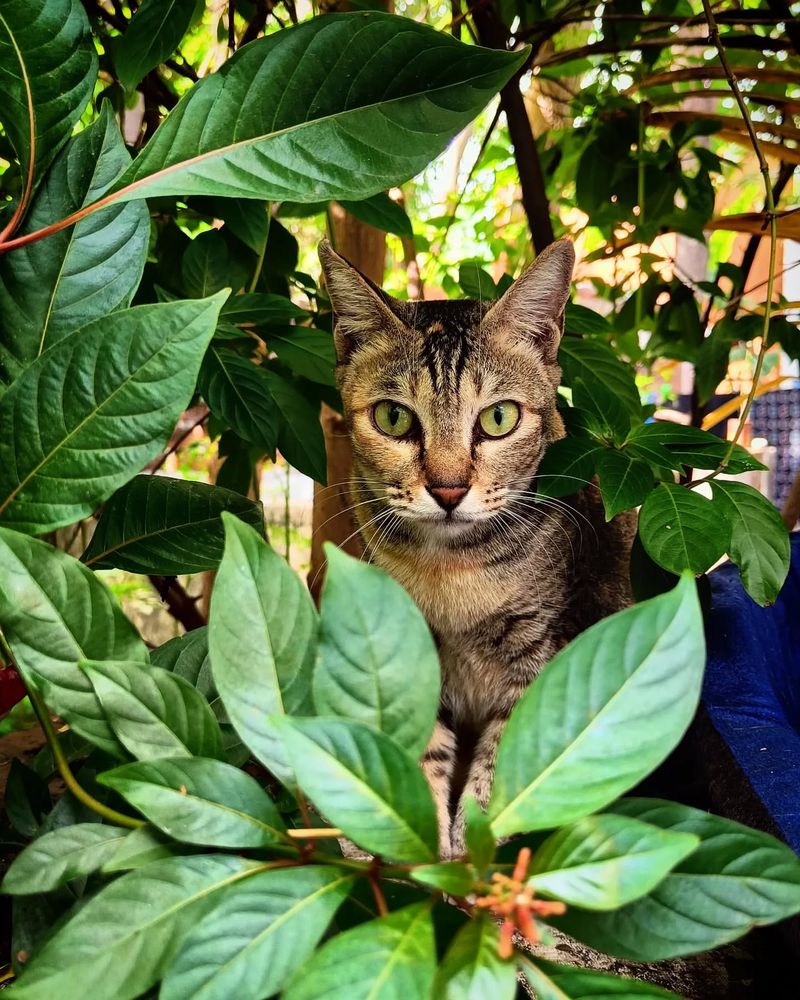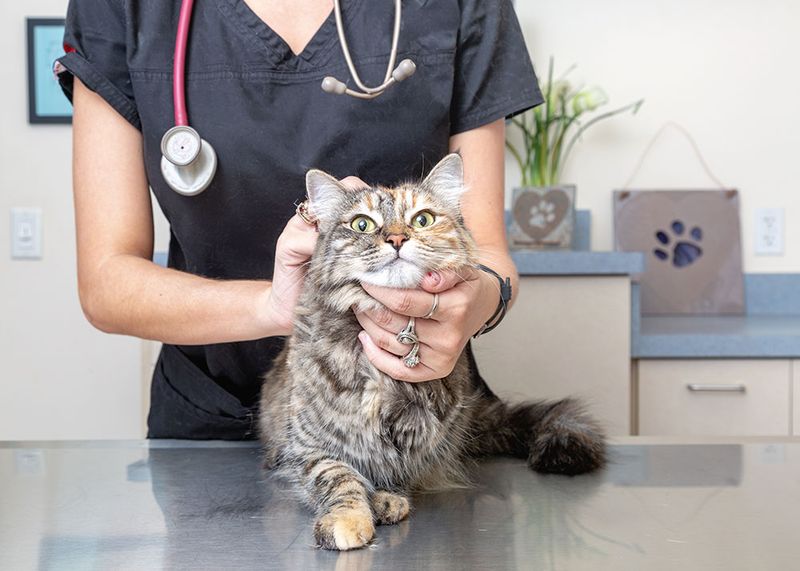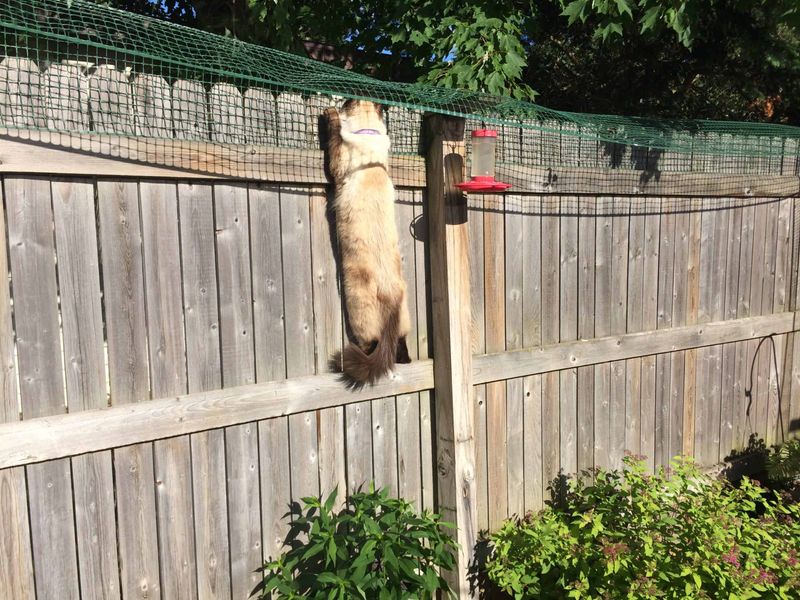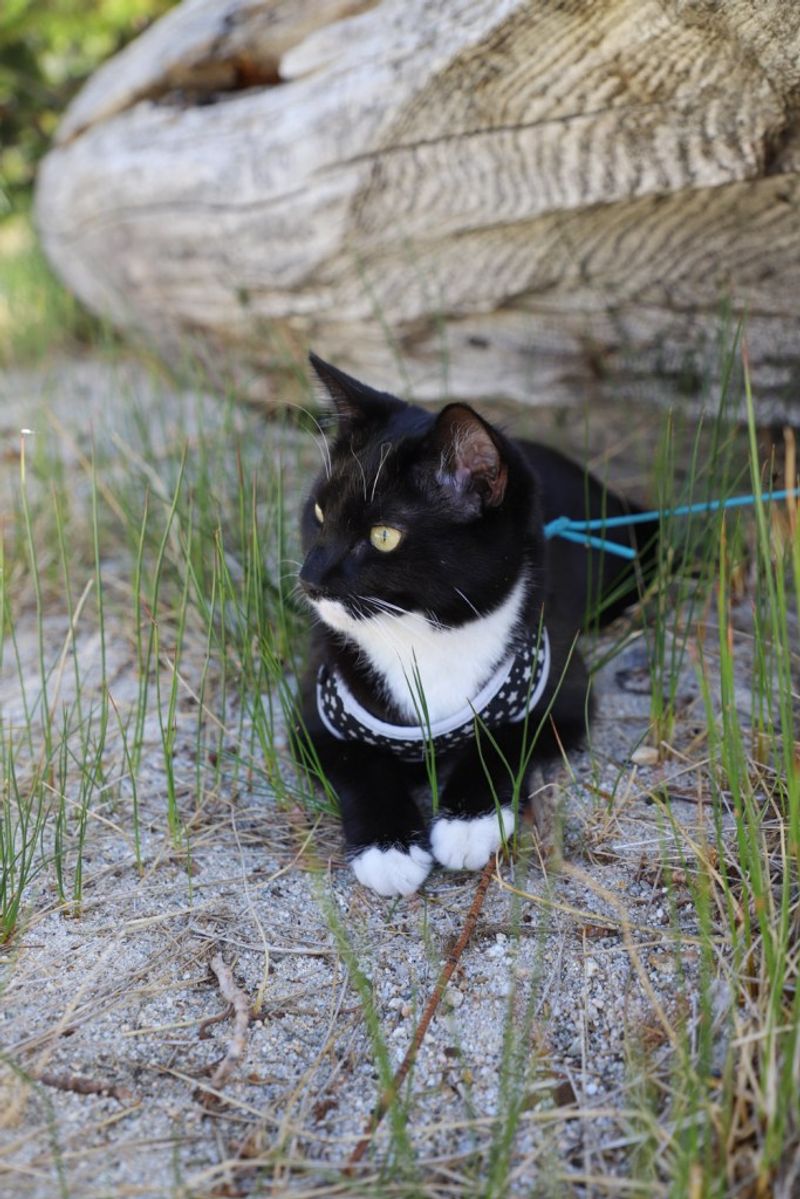📖 Table of Content:
- 1. Stimulating Environment
- 2. Physical Exercise
- 3. Socialization Opportunities
- 4. Enrichment of Senses
- 5. Stress Relief
- 6. Natural Behaviors
- 7. Bonding with Owner
- 8. Safety Concerns
- 9. Health Risks
- 10. Environmental Impact
- 11. Escape Risks
- 12. Behavioral Changes
- 13. Weather Challenges
- 14. Time and Commitment
Exploring the outdoors can be an exciting prospect for indoor cats, offering new experiences and challenges. However, it also comes with its own set of risks and considerations. In this guide, we will explore seven compelling reasons to take your indoor cat on outdoor adventures and seven considerations that might make you think twice before opening that door. This balanced view aims to provide you with insights into both the potential benefits and drawbacks, helping you make an informed decision about your cat’s lifestyle.
1. Stimulating Environment
Outdoor environments offer a rich tapestry of sights, sounds, and smells that can stimulate a cat’s senses. For an indoor cat, the chance to explore a garden can be like entering a sensory wonderland. This new environment can help reduce boredom and encourage natural hunting instincts. A curious cat might spend hours watching birds or chasing butterflies, providing both mental and physical exercise. However, it’s important to ensure the area is safe and secure. Outdoor adventures can lead to a happier, more fulfilled feline.
2. Physical Exercise
Outdoor adventures provide cats with ample opportunities for physical exercise that they might miss indoors. Climbing trees, sprinting through the grass, and jumping over obstacles can strengthen muscles and improve agility. This kind of activity can help maintain a healthy weight and prevent obesity-related health issues. For energetic cats, the outdoors can be a playground where they burn off excess energy. However, supervision is key to ensure they don’t overexert themselves or come into harm’s way.
3. Socialization Opportunities
The outdoors can introduce cats to new social experiences, potentially meeting other cats or friendly animals. Such encounters can teach valuable social skills and reduce fearfulness or aggression. A cat who learns to interact positively with others can become more adaptable and confident. However, it’s crucial to monitor interactions closely to prevent any conflicts or stress. Socialization should be gradual and controlled, providing a balanced experience that enriches a cat’s social life.
4. Enrichment of Senses
The wealth of sensory experiences available outdoors can greatly enrich a cat’s life. Smelling fresh flowers, feeling the breeze, and hearing the rustle of leaves can invigorate their curiosity. These experiences can keep their mind sharp and engaged, reducing the likelihood of stress or anxiety that might arise from a monotonous indoor life. Yet, such stimulation should be balanced with safety precautions to prevent overstimulation or danger. A well-rounded sensory exploration can enhance their quality of life significantly.
5. Stress Relief
Outdoor environments can provide a peaceful escape for cats, reducing stress and promoting relaxation. A leisurely stroll in a secure yard can be a calming experience, offering a break from indoor noise and confinement. The natural surroundings can be soothing, helping to alleviate anxiety and improve overall well-being. Nevertheless, it is important to ensure that the area is secure and free from potential threats. A cat’s retreat to the outdoors can be a refreshing change that promotes mental health.
6. Natural Behaviors
Being outdoors allows cats to engage in natural behaviors such as stalking, pouncing, and exploring, which can be limited indoors. This opportunity to express their instincts can lead to a more content and balanced temperament. Observing a cat’s natural prowess can be rewarding for owners, too. However, it’s essential to provide a safe environment where they can explore without danger. Encouraging such behaviors under supervision can foster a healthy and natural feline life.
7. Bonding with Owner
Outdoor activities can strengthen the bond between cats and their owners, offering shared experiences and adventures. Walking a cat on a leash through a park can be a mutually enjoyable activity that fosters trust and companionship. These moments can deepen your connection, making both cat and owner more attuned to each other’s needs and behaviors. However, it requires patience and training to ensure the adventure is positive and stress-free. Such bonding moments are invaluable for nurturing a strong relationship.
8. Safety Concerns
While the outdoors can be thrilling, it presents numerous safety risks for cats. Traffic, predators, and toxic plants are just a few hazards that can pose serious threats. Even a fenced yard isn’t entirely risk-free. Cats are naturally curious and might venture into unsafe areas if not closely supervised. It’s crucial to assess the environment and take necessary precautions to mitigate risks. Providing a safe adventure is paramount, as the well-being of the cat should always be the priority.
9. Health Risks
The outdoors can expose cats to various health risks, such as parasites, diseases, and injuries. Fleas, ticks, and other pests are common concerns that can affect a cat’s health. Additionally, encounters with other animals might result in contagious diseases. Regular veterinary check-ups and vaccinations are essential for any cat exploring outside. Ensuring they are protected against these risks is vital to maintaining their health and longevity. A healthy cat is a happy cat, and preventive care is key.
10. Environmental Impact
Cats are natural predators, and their presence outdoors can negatively impact local wildlife. Birds, small mammals, and reptiles may fall victim to a cat’s hunting instincts. This predation can disrupt local ecosystems and lead to declining wildlife populations. Responsible pet ownership includes considering the environmental impact of allowing cats outdoors. Supervision and controlled access can help minimize harm, ensuring that both cats and wildlife coexist harmoniously. Balancing adventure with ecological responsibility is essential.
11. Escape Risks
The lure of the great outdoors can tempt cats to stray far from home, increasing the risk of becoming lost. Even in familiar surroundings, a cat might wander too far, leading to potential separation from its owner. The risk of escape is a significant concern, requiring careful management to prevent such situations. Microchipping and ID tags are practical measures to ensure a safe return if a cat ventures too far. Secure boundaries and vigilant supervision can help mitigate escape risks.
12. Behavioral Changes
Exposure to the outdoors can lead to behavioral changes in cats, some of which may be undesirable. A cat accustomed to outdoor freedom might become restless or anxious when returned to indoor life. This change can manifest in pacing, vocalization, or destructive behaviors. It’s crucial to weigh the potential for such changes against the benefits of outdoor exploration. Understanding and managing these behaviors requires patience and adaptability from owners. Striking a balance between outdoor excursions and indoor contentment is key.
13. Weather Challenges
Weather conditions can pose significant challenges for outdoor adventures with cats. Rain, snow, and extreme temperatures can make outdoor exploration uncomfortable or even dangerous. Cats may not always exhibit signs of distress, so it’s vital to monitor them closely in adverse weather. Providing shelter and appropriate attire, such as a cat-friendly jacket, can help mitigate these challenges. Planning outings according to favorable weather ensures a pleasant and safe experience for both cat and owner.
14. Time and Commitment
Outdoor adventures with cats require a considerable time and effort commitment from their owners. Preparing for safe outings involves planning, training, and constant supervision. Not all owners have the resources or lifestyle to accommodate regular outdoor excursions. It’s important to consider whether you can invest the necessary time and energy to ensure a safe and rewarding experience. Assess your readiness for this commitment to avoid potential stress or disappointment. Responsible planning leads to successful adventures.


